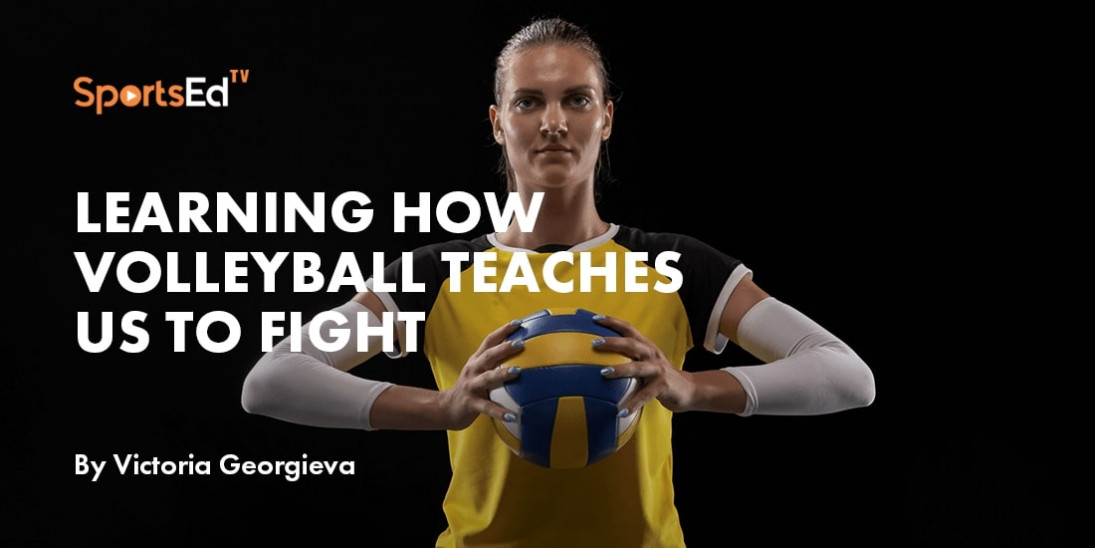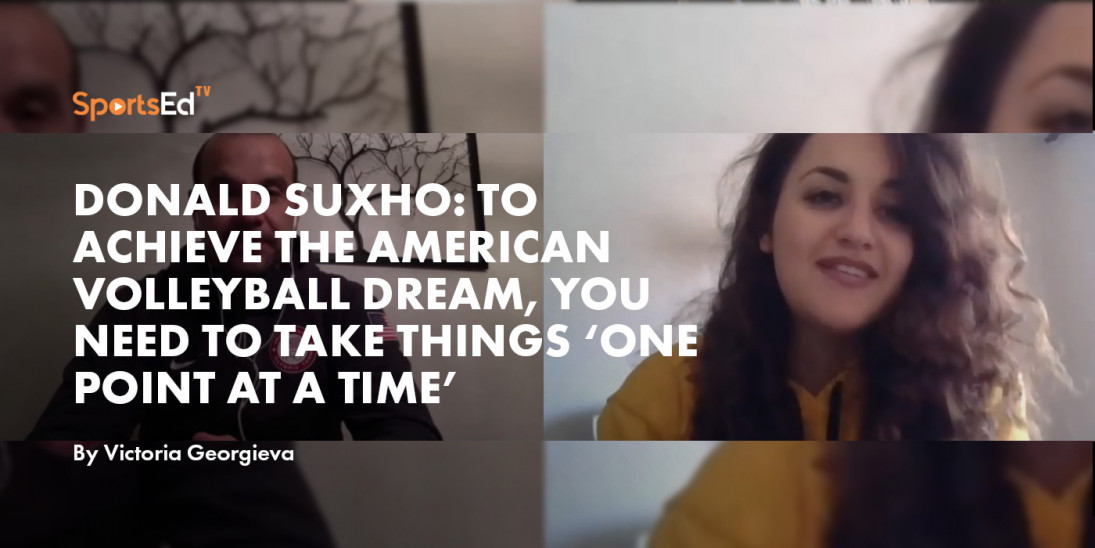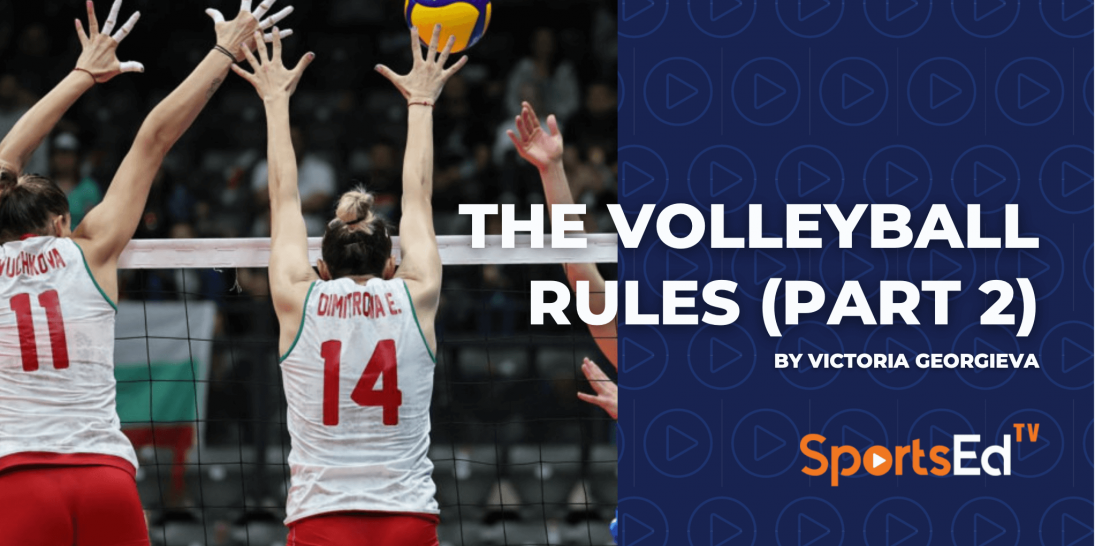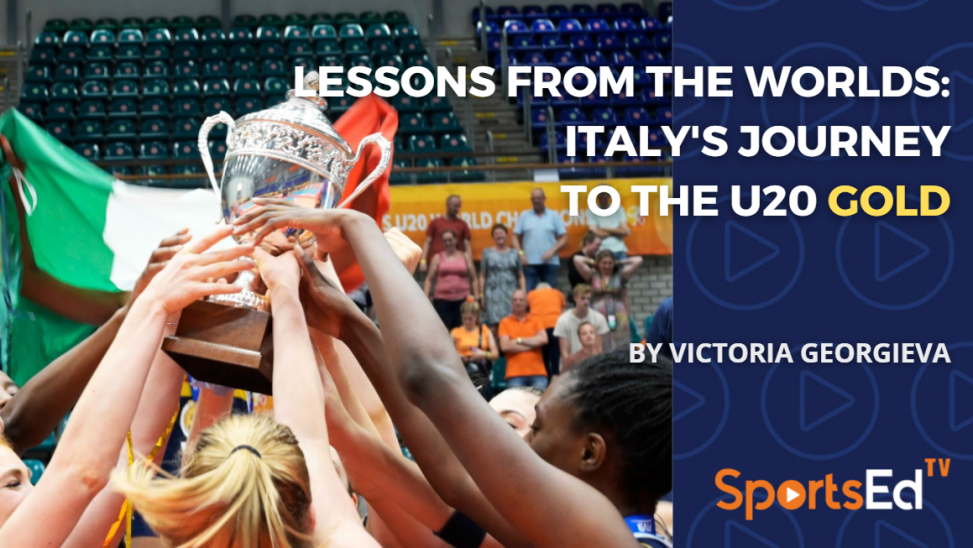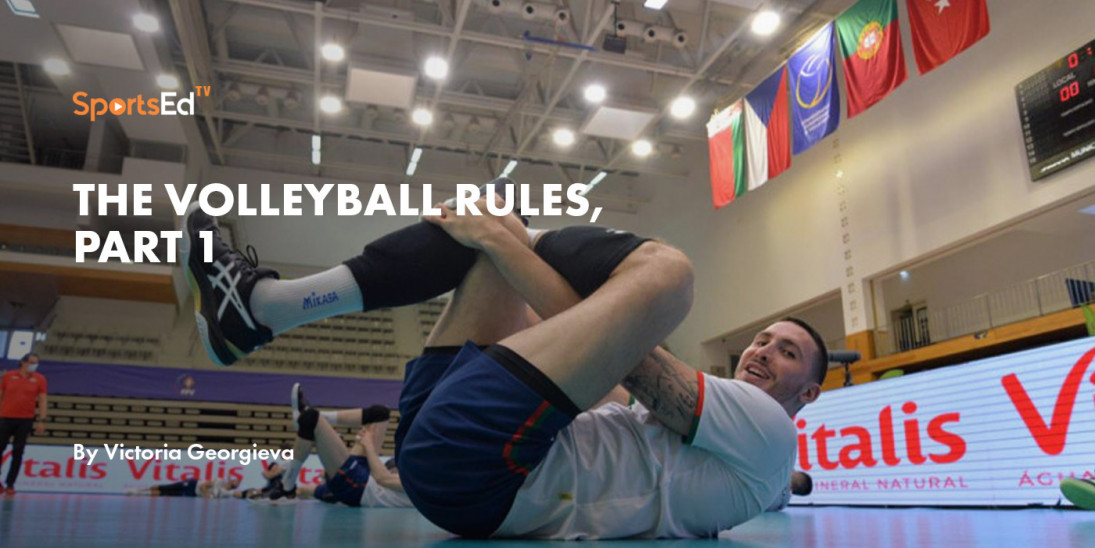Volleyball
Welcome and thanks for visiting...

SportsEdTV Talks to Jim Stone
If you still don’t know it, Volleyball can bring you all around the globe! Furthermore, volleyball can connect you with people who long before you were born, were already dedicating themselves to the favorite game.
Imagine how lucky I felt to have a nice (and long) chat with Jim Stone, former coach of Ohio State University (for 26 years!) who since 2007 has been busy within the USA Volleyball High Performance pipeline serving as head coach of the U.S. Girls’ Youth National Team.
On a beautiful sunny day in Colorado, which turned out to be a cloudy afternoon in Barcelona, Spain, we sat down online with Jim to discuss the secrets of volleyball coaching.
We also played a little game that we called “Skills-Drills”, so you better not miss that conversation.

SportsEdTV: You have dedicated your life to Volleyball; more than three decades coaching, you have been part of the U.S. coaching staffs, and spent 26 years at Ohio State University! What was your secret as a coach to always find inspiration?
Jim Stone: I just enjoy the game. Both my parents were teachers, so growing up in the academic environment, I grew very used to this. The whole teaching and coaching lifestyle was just part of my life. For me, working in the Ohio State University was just a continuation. I enjoyed teaching, I enjoyed coaching. Those two terms are kind of synonyms. It wasn’t hard to spend this time at one place. That being said, after 26 years at the Ohio State University, I was looking for something different. Having some responsibilities with U.S. Volleyball seemed very appealing. From 2007 to 2019, I worked with the U18 U.S. teams, still getting the teaching/coaching component but out of the university setting.
SportsEdTV: You are now retired, but you intend to remain close to the Volleyball world, sharing insights and helping younger coaches to become "better teachers and better coaches". How important is it to understand the role of the coach as a teacher, too?
Jim Stone: That’s a very good question! Sometimes, I look at younger coaches, and they know the game well, personally. They’ve been good players. They know the skills. But sometimes, their shortcoming is being able to transfer the information that they know, these lessons, to their students in the best way possible. Even if somebody is a good player in their own abilities, they still have to work hard to be able to transfer this information so that their team, their athletes, can learn, have fun, and take the game seriously without losing the enjoyment of the game. I think it is very important for the coaches to study and learn the principles of teaching. I think that the best Volleyball coaches are also good teachers. They may not have a degree in teaching, but they are good teachers.
SportsEdTV: What are then these soft skills related to teaching that the Volleyball coach should have?
Jim Stone: We can spend an hour talking about this. It’s about communication skills - the ability to have what’s inside your head as a coach and have it come out either verbally or using the coaching body language, being aware of what you are communicating without speaking. Use different techniques to get your point across, using video. I think that many coaches rely on the verbal part of working with the athletes, but they don’t really look at the video part, the body language part, or the written part. It’s just talk, talk, talk. There are lots of ways to get your point across, and as a coach, you have to explore which way works best for your team.
SportsEdTV: That’s something very interesting. What does your players' body language show you? What does your body language show them?
Jim Stone: Exactly. At times, coaches get frustrated with events on the court. I’ve tried really hard to not let any frustration be seen because players see that. And then they are like “Oh, what’s the coach thinking”, “Am I in trouble?”. I tried really hard either to be with positive body language or no body language at all, to avoid the bad body language.
SportsEdTV: Besides being practical in your coaching approach, you have been also academical. What have been the challenges in implementing these academical parts in the trainings?
Jim Stone: Every player is a little bit different, so certainly, this is part of the challenge - to understand what works for each player. But then, on the flip side, it is also the responsibility of the player to be a good learner. The learning and teaching process is a two-way trip. You can’t just be the coach, and the player is an active participant in the learning process, so… As coaches, we are “sales” people. We have to sell the player on “This is important, this will work, join me, let’s work together on this”. This is a kind of American truth, but we need the player to be buoyant. I think the personality of the coach has a part in getting that buoyant feeling and getting the players excited about the learning process. Once the players are excited, you can do all sorts of things and encourage them to be better. They can evaluate their own performance outside the coach’s view. There are lots of ways to go about teaching and learning, but probably the most important is to make sure that players are excited about learning and know that the coach is trying to help them.
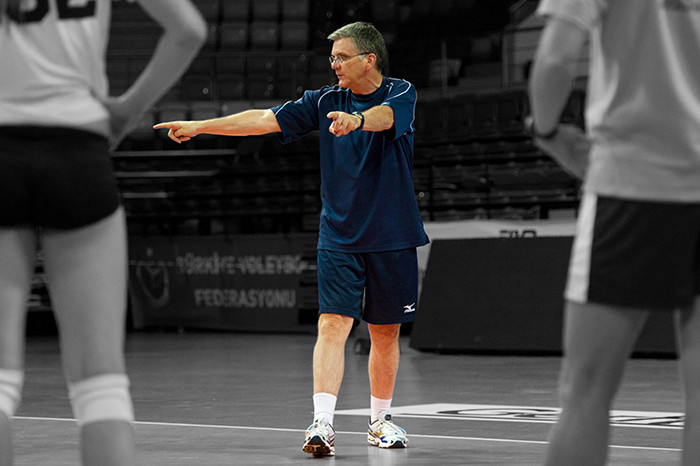
Jim Stone: Every player is a little bit different, so certainly, this is part of the challenge - to understand what works for each player. But then, on the flip side, it is also the responsibility of the player to be a good learner. The learning and teaching process is a two-way trip. You can’t just be the coach, and the player is an active participant in the learning process, so… As coaches, we are “sales” people. We have to sell the player on “This is important, this will work, join me, let’s work together on this”. This is a kind of American truth, but we need the player to be buoyant. I think the personality of the coach has a part in getting that buoyant feeling and getting the players excited about the learning process. Once the players are excited, you can do all sorts of things and encourage them to be better. They can evaluate their own performance outside the coach’s view. There are lots of ways to go about teaching and learning, but probably the most important is to make sure that players are excited about learning and know that the coach is trying to help them.

SportsEdTV:You say that one of the things that intrigue you the most is the computerized analysis of skills. You've seen “so many players light up when they see themselves perform from an analytical perspective”. Let's delve into this topic, why is it important to conduct such analysis? How was the Volleyball analysis without video analysis? How technologies have helped?
Jim Stone: When I first started coaching, it was actually the 80s. The video really didn’t exist that much or at all. So, it was mostly that the coach would talk to the player: “Here is what I see.” But as time came by, it became very appealing to me that players enjoy watching themselves play. As a coach, I could tell them what I see - maybe they would understand, or maybe not. But if they saw themselves, they understood. So, I just thought that the whole video component was a great way for the players to learn without the coach talking.
SportsEdTV: It is a more interactive way for them to understand what they have done.
Jim Stone: Yes, because after a while, the coach talks and talks, and the players get tired. If they watch themselves play, they analyze themselves, and they get excited. They get a self-feedback. In the current video analysis and all the information that we are giving the players, we have to try to balance. Sometimes, it can be too much. All of a sudden, the players are thinking too much about all these things, they forget to relax and play. There has to be a balance between good information and not going overboard. The coach can have a lot of information, but the player doesn’t need that much. They just need the important things.
SportsEdTV: To filter the information. You have worked mostly with younger players in clubs, in college, and on a national level. What was the difference between coaching these teams? If any..
Jim Stone: Before leaving the university, I was coaching the age group 18-23. Then, I coached the U18 teams, ages 16-17, and with the local clubs, I coached ages 15-16. I find the younger ages to be more excited to work with. They are younger but still have the motivation to learn, to get better, and to try hard. The game is still fun, they are playing for no money, no contract. And then, with the U18, it was kind of the same way. They were looking forward to a World Championship; they weren’t worried about the college scholarship or the pro-contract. They were just playing the game, seeing how good they can be. For me, as a coach, they were playing the game for the right reasons, and I enjoyed it a lot.
SportsEdTV: Let’s get you back in the time, when you first started coaching. What were the challenges of working with young players? Let’s say physically and technically. To help them control the ball...
Jim Stone: The biggest challenge, both physically and technically, was that we would have 18 players in the gym and in preparation for the World Championship. We had to encourage them and make them understand that they got to this level because they were big, tall, athletic, and strong, and that’s why they excelled in this country. We had to make them understand that Italy has big and tall players, too, Russia has them, so it becomes more a game of a skill component. What we were lacking in our country was the ability to serve and pass. Internationally, the ability to serve with velocity and accuracy and to receive these types of serves was way ahead of what the US players were showing. So, we really had to get them and speed them in a very short period of time on what they were going to face. That was the big challenge in terms of the game.
SportsEdTV: If we are to talk about Volleyball drills and skills in detail, I believe we can spend hours and hours talking about them. But let’s just try to sum up some pieces of advice in a game that I called “Skill - Drill.”
Jim Stone: OK, let’s do it.
Attack
The easy part there is that you get better by attacking. So often, players learn to attack by staying outside the court, and they hit a perfect. I think it is important that even though the focus is on the attack, it becomes a component of other skills. Like in the game, you don’t stay outside. If you get players to pass to attack or defend to attack, set and then go attack, so there’s multiple contacts, rather than just working on the attack, it is better. I think it’s an important component, working on attack, but we need to try connecting the dots of the other parts of the game.
Block
That’s the last thing that the players learn how to do because they don’t practice it very much. Especially at younger ages, everyone wants to attack. No one wants to block. I think the weakness that our U.S. players have is that they tend to watch the ball everywhere. What we try to do is to encourage them that the ball is not going to hit and is not going to bother them. It’s the player over there that’s going to do it. Spot the player and the movements! Work with the eyes, and follow the ball and the player. It is difficult to develop this multitasking by watching both the ball and the player.
Serve
I think with younger players, it’s really important that they develop good technique. If they develop a bad arm, it’s hard to be a good server afterward. So, especially with younger players, when they start on the court, the distance to the net should be smaller. They can just work on good technique. Then, when their technique becomes good, we can start moving back on the bigger distance. Sometimes we start players behind the service line too early, they are just trying to get the ball over the net. They develop bad habits that become difficult to break. So, moving them on short distances, working on the skill, and improving the shoulders is a good way.
And with really young players, age 11-12, they are not very strong in the shoulders, just toss it high and almost spike, spin the ball over so they can develop shoulder strength first. Trying to get the float serve too early, they are not strong enough to do so.
Defense
The biggest challenge that I see is that players want to use their arms in defense and not their feet. Coaches who are working with younger players should work with them on the shuffle step, getting behind the ball rather than reaching sideways. Shuffle step, running, because the field is 9x9 m, that’s a lot of area. If we get them to the shuffle step, run and move to the ball, and then execute the skill. Working a lot with the feet, maintaining the posture with younger players.
Setting
In our country, setting is a weaker skill. One of the reasons is they don’t put in enough time. Even for my local club, the setters will always show up 30 minutes early and work on repetition and footwork. Setting is a very technical skill, and hitting is a very athletic skill, but at setting, you have to be very precise with the contact, set forward, set backward, so it takes more time. So if the setters aren’t willing to put in that extra time is difficult to be good. A setter should work with their foot, working to get to the ball and being there, it’s really.
SportsEdTV: You have written an E-book, A Game Plan for Better Practices, that focuses on practice management. Is there such a thing as the Perfect Training and what in your opinion should be the aspects of it?
Jim Stone: There’s not a perfect training. Coaches in our country believe there is a right way and the wrong way, I think that’s a mistake. There are a lot of right ways and lots of wrong ways, but I just think it is important for the coaches to gather as much information as possible. And then it kind of guides you in the right direction. What I try to do in the E book is not to show the right way, but more like “Here's the whole information and things that you might consider when you are putting together your practice plan. It can be a single-week plan or a six-week plan.” So, I don't think there is only one way for a coach to go about what they do. Whatever they do, they are doing it for a good reason that they can explain.
Every team is different, maybe you have to change your offense for example, to get in line with the abilities that this team had. Last year’s team had these abilities, this year’s team is different. Sometimes the coach has to change with the players.
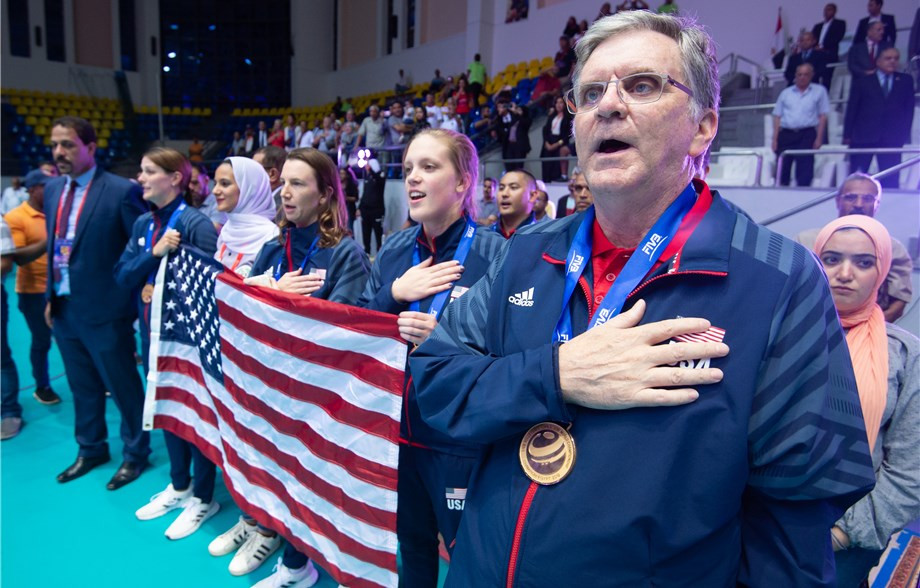
Photo credit: volleyball.world
SportsEdTV: You talk about checklists in your book - how important is it to have such lists when preparing training?
Jim Stone: What we try to do, inside the book, we try to start and point out what’s important for this age group, correctly teaching them to run, jump, doing different games. Young kids still want to have fun; they don’t want to be bombarded with techniques. We can have fun and still teach them basic motor and movement skills, and then we put some Volleyball into that.
“Now that you know the shuffle step, let’s do the shuffle step and pass the ball. Then you keep getting older, and you can shuffle step, and pass the ball from a live serve. It’s a progressive way to teach them”.
SportsEdTV:Now that you are serving as a consultant to clubs, collegiate teams, what are the things that people search you for the most? What are the Volleyball problems that you detect, and how do you help them solve these?
Jim Stone: Firstly, I can only speak about what I see in the U.S.A. Sometimes at younger ages, coaches put too much emphasis on winning and losing. You have to get ready to go to the tournament and sometimes they sacrifice the players getting better at skills. We should have the bell ringing “Are we becoming better Volleyball players?”. There’s plenty of time when they get older when they will compete. But I think when you are 12-13, that’s the time when you learn how to play all the positions.
Secondly, and I don’t want to contradict myself, sometimes when we get older, it’s ok to compete. In American saying, it’s not whether you win or lose, it’s how you play. Well, that’s true, but it also matters if you win. Teaching your kids to compete, to play hard, and to have high goals is good. Sometimes you win, sometimes you don’t, that’s ok, but pursue winning is a good thing.
Thirdly, teach your players to do everything. In our country, we tend to think: “Ok, this person is a good hitter, so they’re going to hit this position, for example”. Ok, but they need to learn how to pass and set; maybe they are going to hit when they are in the front row, but they are going to set when they are in the back row. They will play left front, middle front, right front, rather than just left front. Teaching the players all the skills is pretty important.
At 13, somebody may be small, and you don’t let them play in the front, but at the age 16 they are the tallest. You never know who’s going to get better as they grow older.
SportsEdTV: What books or films would you recommend to coaches? I know you like Forever's Team by John Feinstein.
Jim Stone:It is an interesting book. It’s not about volleyball; it’s about basketball, but it’s about a coach who had a very good team with which, the previous year, they went to the national finals. The whole team came back the next year, everybody was saying they were the guaranteed champion and the team just fell apart. Players got hurt, academic issues happened, and bad team chemistry. The poor coach had nothing to do with it. It is kind of how sometimes the coach doesn’t have control over everything.
The books that enjoy are coaching books from any sport. Because I think that coaching is coaching, it goes across the boundaries of the sport. A good football coach in Europe, will probably be a good volleyball coach. I always recommend such books, you can always pick out one or two things and apply to your situation.




